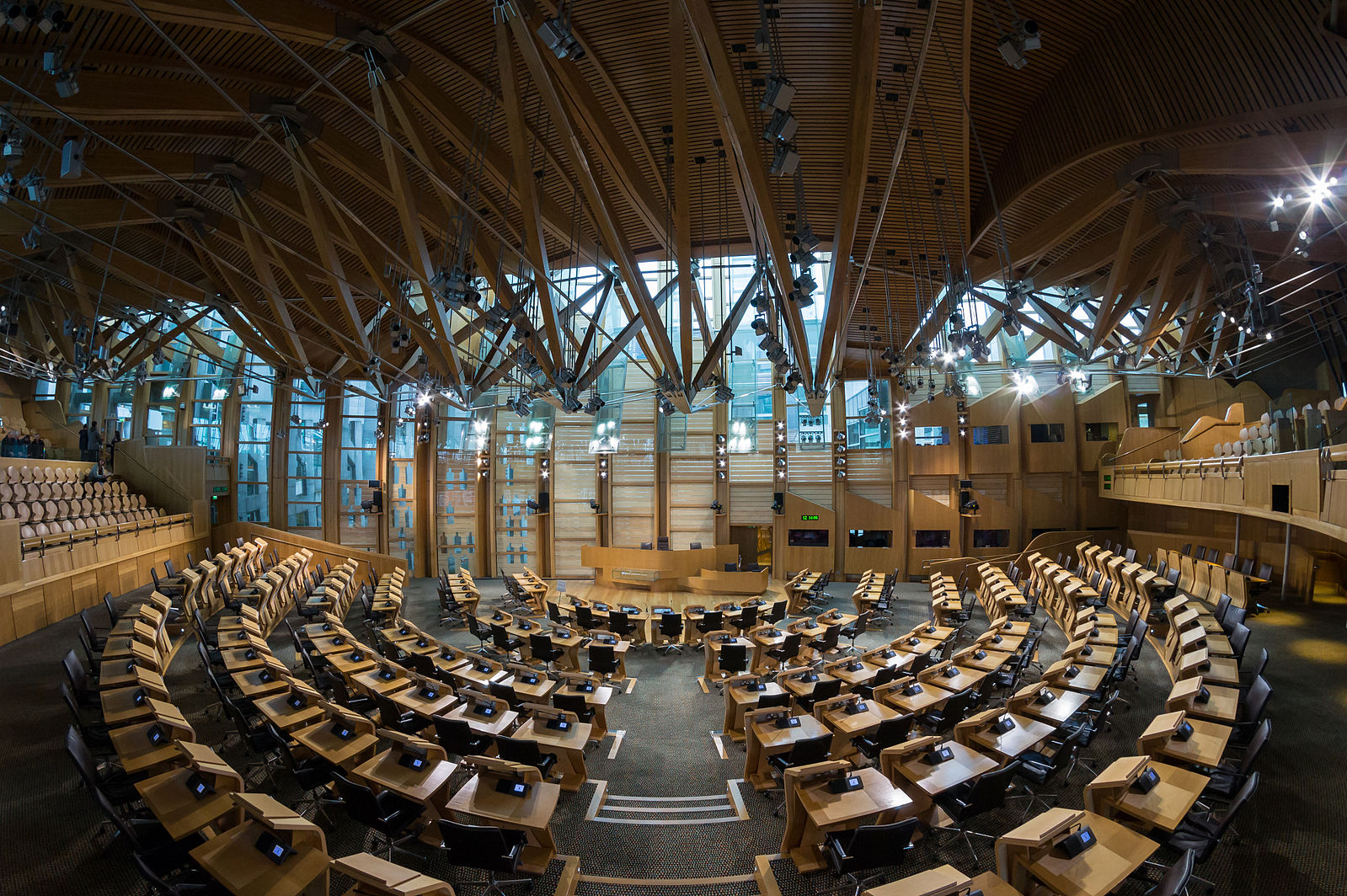The brave: delivering community wealth in Scotland
Posted on 03 Feb 2022 Categories: Blog, Cross-posts, Local initiatives, New democratic models, Devolution, New economic models, Community Wealth Building, Wellbeing
by CLES
At the close of the 2021 Community Wealth Building Summit, we reflect on remarks by our opening keynote speaker Tom Arthur MSP and the work that CLES has undertaken with the Scottish government over the last 12 months. The lessons learned should resonate with governments of all scales in Scotland and the wider community wealth building movement.
In his opening remarks to this week’s Community Wealth Building Summit, Tom Arthur MSP argued that community wealth building provided an “opportunity to approach economic development in a new way” in order to help create “common prosperity”. As the Scottish Minister for Public Finance, Planning and Community Wealth, Mr Arthur has put community wealth building at the forefront of his agenda arguing that it needs to sit across government, providing a “whole system approach” to an inclusive economy. He also confirmed the Scottish government’s intention to introduce a Community Wealth Building Bill during this parliament, to consolidate changes in practice and enable local anchor organisations to use their economic leverage to deliver more for local people and communities.
These developments are a testament to just how far community wealth building has come. The approach is now becoming part of the mainstream of economic development and being adopted in a myriad of different contexts across a global footprint. And it is easy to see why. The confluence of crises within which we find ourselves has inspired people everywhere to consider new, fairer, ways of operating our societies, our economies and our ecosystems.
At CLES, we have been working to develop the practice of community wealth building across the UK for over a decade now, and the last 12 months have seen us partner with councils and anchor institutions across Scotland to develop action plans for five local areas. Supported by the Scottish government, this work has been diverse by design. We have examined how community wealth building can be applied in a variety of contexts, including vacant and derelict land, food co-operatives, gender justice and new approaches to tackling poverty and inequality.
The learning that has emerged from this process offers a number of key lessons which we summarise and discuss below. These should resonate with both the Scottish government and local areas in Scotland who have yet to embark on their community wealth building journey. Moreover, there is much to be learned here by the wider community wealth building movement, to inspire yet more progressive activity that serves our people, planet and places.
1. Anchor networks can be transformative
Our experience tells us that – in every place – community wealth building is most effective where anchor institutions meaningfully collaborate. To be truly transformative, this must be done within formal structures, established to influence and shape local economies through the way in which they use assets, support employees and work together to make the most of local procurement and commissioning.
Scotland’s Community Planning Partnership architecture provides significant potential for this collaboration by bringing together key stakeholders such as councils, the NHS, universities and colleges, as well as other partners such as Police Scotland, the Scottish Fire and Rescue Service and third sector infrastructure bodies.
Community Planning Partnerships are ubiquitous across Scotland and mean that all areas have a strong grounding from which to push forward community wealth building activity through anchor institution networks. In all of the pilot areas, however, we unearthed the potential for further collaboration to deepen and scale-up progressive economic practice. By honing in their focus on the collective power of public spending, inclusive employment, land, property and finance we found that there were real opportunities for areas to use community wealth building to deliver greater positive social and economic outcomes for their places.
In the pilot areas, these anchor networks are helping to set the foundations for change. In Fife, community wealth building is now the key element underpinning the locality’s approach to economic recovery, poverty and climate emergency. In the Western Isles and the South of Scotland, there is a particular emphasis on progressive procurement and spending. In the Glasgow city region, a more collective approach to land is now challenging preconceptions on how derelict sites should be redeveloped. In Clackmannanshire, community wealth building for gender justice is now a defining principle that is being applied to economic development, to enable women and girls to achieve their full potential.
By taking inspiration from these examples, there are also opportunities to harness the power of anchor networks in other areas of the UK. While not quite as mature, a community planning partnerships architecture also exists in Northern Ireland. In Wales, there are public services boards that are charged with carrying out local well-being assessments and publishing annual local well-being plans to set out how local areas will meet their responsibilities under the Well-being of Future Generations (Wales) Act, 2015.
In England, the echoes of the local strategic partnership architecture continue to bind together some groups of local anchors to encourage joint working on placed-based strategies and initiatives. Similarly, the emergence of newer groupings such as integrated care systems are bringing together NHS organisations and local councils to improve the health of the populations they serve.
Yet our experience in Scotland has shown that, despite the presence of existing anchor networks, positive economic change will not happen on its own. To bridge the gap between new action and the inertias of existing culture and rules, we need intermediaries, champions, change agents, facilitators and opinion leaders to drive forward community wealth building activity.
2. Funding needs reform
In Scotland, as with other parts of the UK, funding has been made available to areas through the Community Renewal Fund and the Community Ownership Fund. In addition, all areas in Scotland have either a city region deal or regional prosperity framework in place. It is encouraging that many areas are exploring how they can harness these opportunities to deploy the principles of community wealth building. In some places, like the Western Isles, funds have supported the recruitment of dedicated staff – community benefits (social value) and regeneration officers – with responsibility for weaving economic democracy through public spending decisions.
Nevertheless, a recurring critique we encountered during our work in Scotland was that this funding system was fragmented and depends largely upon competitive bidding which can suck up precious time.
This is also a challenge for local authorities in England as they attempt to access the myriad of funding streams available to them as part of the levelling up agenda. What is needed is a wholescale reform of long-term revenue and capital funding, to bring together the various existing pots and devolve them to local government. At a minimum, a simplification of funding streams would allow practitioners to concentrate on delivery and should be a priority for the Scottish and UK governments.

3. Real devolution reaps rewards
It is no co-incidence that we are beginning to see an appetite for greater economic innovation in the devolved nations. Meaningful devolution provides a context within which there is scope to diverge from the economic orthodoxy dictated by the UK Treasury. The status of community wealth building in Scotland – as central to the government’s wellbeing economy aspirations, underpinned by a national policy framework and featuring in the Scottish Programme for Government – is testament to this, as is Tom Arthur’s appointment (as possibly the first national “community wealth building minister” in the world) and the commitment to introduce a Community Wealth Building Bill.
This permissive policy context is already reaping ample rewards for the redirection of wealth, control and benefits to local communities.
North Ayrshire released its first Community Wealth Building Annual Report in October. The South of Scotland has committed to embedding community wealth building in its regional economic development strategy and is rolling this out through various investments and activity across the region. Similarly in the Tay Cities Region, the Western Isles and the Glasgow City Region, we saw a willingness to act regionally where possible and appropriate, whilst simultaneously pursuing targeted local interventions.
Other agencies like the Economic Development Association Scotland (EDAS), the Scottish Land Commission and the Supplier Development Programme have all embraced community wealth building and are actively using their platforms and networks to advance good practice across the country. This has raised awareness, deepened knowledge and allowed places to learn from each other’s experiences.
In England, the impetus for change is coming, not from national government, but from local councils who are pushing the potential of community wealth building to support a more inclusive economic recovery. However, its adoption at scale is hampered by the proliferation of the economic model prescribed by the Treasury and Whitehall, as well as a narrowly focused local economic development practice, which continues to prop-up extractive fossil fuelled economic growth.
As such, CLES has recently argued that a genuine step change is needed with respect to devolution, particularly in England, to provide greater freedoms to embed community wealth building principles into local economic strategies.

4. It isn’t only urban
While community wealth building approaches to date have often been focused on urban areas, working in Scotland has provided us with an opportunity to explore its application in areas which have more rural characteristics, such as smaller and more dispersed population patterns and smaller towns and villages. These areas are often also the location of significant natural assets, including areas of outstanding natural beauty and rich biodiversity.
In these areas, our work identified that foundational industries such as agriculture, forestry and fishing can play an important role alongside ecosystem management. It also highlighted the value of natural resources such as water, peatland and good air quality as key tenets of an inclusive economy. In many of the pilot areas, tourism was an important economic sector but one that often exemplified the challenges of an extractive economy, for example, the trend towards second home ownership in the Western Isles.
Community wealth building is often described as a “model” for progressive local economic development, but – as the depth and range of the lessons above demonstrate – it is not a one-size-fits-all blueprint for change, nor does it exist in isolation from the local or national policy context. To truly deliver, community wealth building requires deep transformation on multiple planes, which takes time and graft, carefully adapted to meet the economic, social and environmental context of place.
For many of the areas in which community wealth building is emerging, this means that ongoing support is vital. Not only in terms of staff capacity and expertise but the chance for peer support and shared learning, something that EDAS is developing in partnership with CLES through a new dedicated community of practice for economic development practitioners in Scotland. This will complement the communities of practice already hosted through CLES’s Community Wealth Building Centre of Excellence.
If you would like to join the ever-flourishing community wealth building movement and discuss how you might advance community wealth building in your area, please get in touch.
This was originally posted on the CLES blog on 19th November 2021.
Want to keep up-to-date with more articles like this? Sign up to our newsletter.
Posted on 03 Feb 2022 Categories: Blog, Cross-posts, Local initiatives, New democratic models, Devolution, New economic models, Community Wealth Building, Wellbeing

